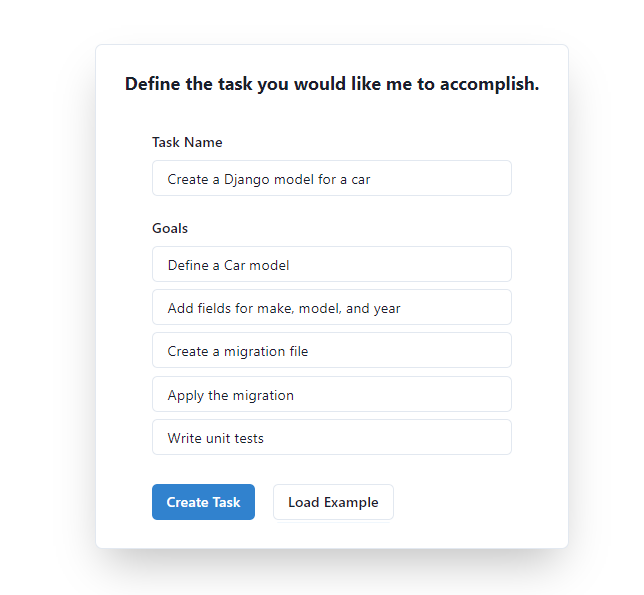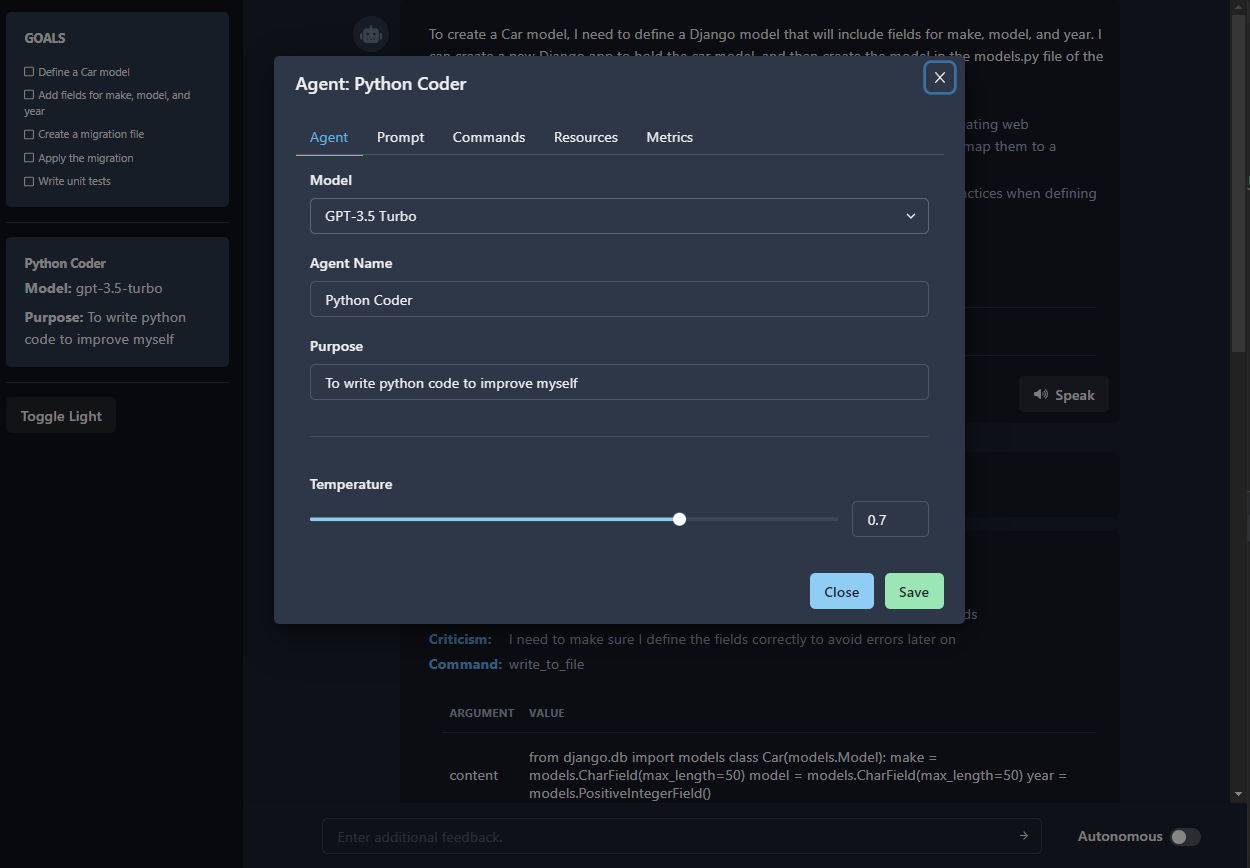
Amidst the swirling sands of the cosmos, Ix stands as an enigmatic jewel,
where the brilliance of human ingenuity dances on the edge of forbidden
knowledge, casting a shadow of intrigue over the galaxy.
- Atreides Scribe, The Chronicles of Ixian Innovation
The platform supports deployment using Docker containers, ensuring a consistent environment and enabling easy scaling to multiple worker containers.
You provide a task and goals and an agent uses that direction to investigate, plan, and complete tasks. The agents are capable of searching the web, writing code, creating images, interacting with other APIs and services. If it can be coded, it's within the realm of possibility for an agent to assist.
Note that this is an early version and should NOT be used in production. Agents require a human in the loop to provide direction and halt the process if it goes off the rails.
- Scalable model for running a fleet of GPT agents.
- Persistent storage of interactions, processes, and metrics.
- Responsive user interface.
- Message queue for agent jobs and inter-agent communication.
- Extensible model for customizing agents.
- Deployment using Docker.
- Python 3.11
- Django 4.2
- PostgreSQL 14.4
- Graphql
- React 18
- Integrated with OpenAI GPT models
- Plugin architecture to support extending agent functionality (e.g. web browsing, writing code, etc)
- Generic framework for vector database based agent memory
- Pinecone
- Redis
- Milvus (soon)
- FAISS (soon)
Before getting started, ensure you have the following software installed on your system:
- Docker
- Docker Compose
Clone the repository:
git clone https://github.com/kreneskyp/ix.git
cd ixSetup config in .env
cp .env.template .envOPENAI_API_KEY=YOUR_KEY_HERE
# Pinecone
PINECONE_API_KEY=
PINECONE_ENV=
# search
GOOGLE_API_KEY=
GOOGLE_CX_ID=
WOLFRAM_APP_ID=
Build and run the dev image.
make dev_setup
Run the dev server
make runserverStart a worker
make workerVisit http://localhost:8000 to access the user interface and start creating tasks for the autonomous GPT-4 agents.
The platform will automatically spawn agent processes to research and complete tasks as needed.
Run as many worker processes as you want with make worker.
Here are some helpful commands for developers to set up and manage the development environment:
make runserver: Start the application in development mode on0.0.0.0:8000.make worker: Start an Agent worker.
make image: Build the Docker image.make frontend: Rebuild the front end (graphql, relay, webpack).make webpack: Rebuild javascript onlymake webpack-watch: Rebuild javascript on file changes
make migrate: Run Django database migrations.make migrations: Generate new Django database migration files.
make bash: Open a bash shell in the docker container.make shell: Open a Django shell_plus session.


